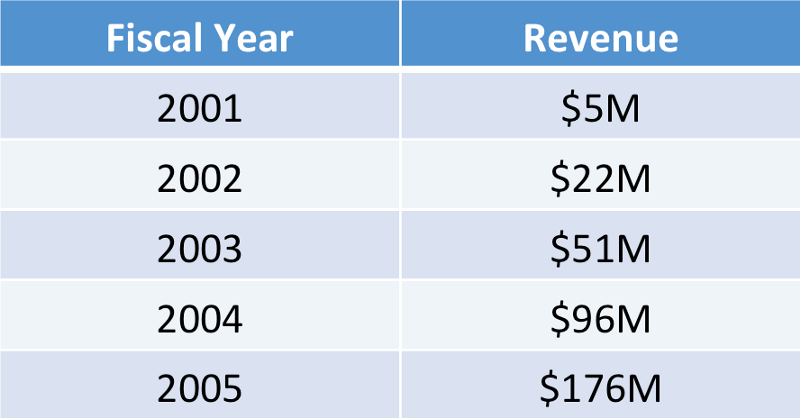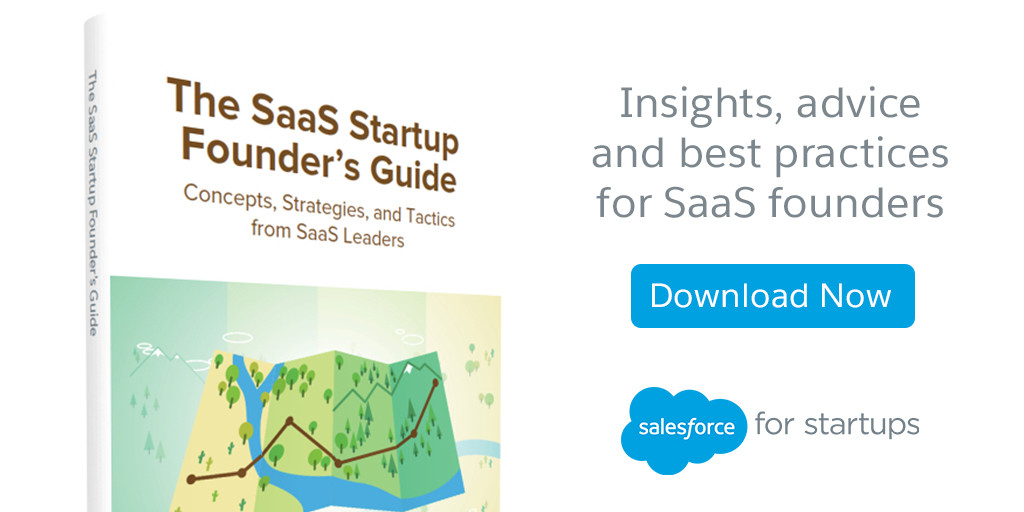by Mike Kreaden, Salesforce
Coming out of the SaaStr Annual this year, I noticed that a majority of the founders that I met were focused on growth. This means that they were either past initial traction, or at least had line of sight to that important point of business validation. My discussions always centered around the question “How did you [Salesforce] do it?” If you look at the revenue growth numbers in the first 5 years, you will see that Salesforce was a true outlier.

Salesforce Revenue Growth — Year 1 to Year 5
Going Up Market
Salesforce was disciplined and focused on building a repeatable sales process in the early years. We knew how to qualify our prospects well (including saying “no” to deals that required travel to close) and were optimizing our lead to close times for our inbound leads. Somewhere in Year 2, we knew that the sales machine was working well (>400% growth). This was due to a combination of tuning our sales process, hiring and on-boarding sales reps well and focusing on deals that could close within 30 days (we use a 30 day trial as a means to bound the time to close, and to nurture the prospect along the sales journey).
Even at this early stage, we had developed what would become the accepted SaaS sales team structure — SDRs to qualify inbound leads, AEs to close the deals and “own the account,” and Customer Success Managers to help drive adoption, monitor an “early warning system” and prep for renewals.
With all of these signs of success, we were now ready to go up market, and build out a field sales team. Jim Steele was hired in 2002 to figure this out, and the rest, as they say, is history. We tried many plays, including replicating enterprise sales tactics that were commonly used in on-premise software. The only problem to this plan was that we were facing two key differences in selling the SaaS model:
- Security of data was a big concern. So big, that we had to address this concern up front and with hard data. It was still early in SaaS, and CIOs were nervous about relinquishing control.
- Churn and Customer Acquisition Cost had to be considered in lining up the deal. Having clear criteria for success and setting expectations up front was key, as was the understanding of looking at the prospect as a potential “Customer for Life.” ACV is great for the AE who closes the deal, but LTV is what will drive long term growth for the company and unlock second order revenues that will accelerate that growth.
Developing the Model
While it is an interesting back story in how we got to our current sales team model, it is more interesting to discuss what this looks like and how this could benefit you as you enter your growth phase.
Mike Wolff is SVP of Sales as Salesforce, and started in 2002 as entry level Sales Rep (SDR). In our latest publication, “The SaaS Founder’s Startup Guide,” he breaks down the strategy to segmenting the market for growth.
In the guide, Mike discusses a simple 5 point plan to consider in your go-to-market strategy:
- Specialization in Sales
Bifurcate sales dev and AE responsibilities. We have heard from Aaron Ross about this, a former Salesforce team member and author of Predictable Revenue. Account executives need to focus on selling to qualified leads, and sales development needs to focus on building qualified pipeline.
- Customer Buying Patterns
Put in place a sales framework that enables you to effectively sell to companies of varying size and complexity. Large companies tend to purchase at the beginning and end of budget cycles. They may also “dump” budget at the end of the cycle, allowing you reap the benefits of an accelerated close. Smaller companies purchase on need, pain and cost. At the low end of the SMB segment, it is not uncommon for you to see sales cycles of 30 days or less (e.g., SalesforceIQ).
- Direct Sales
Get this right before taking on any expansion plans for your sales organization beyond HQ. For the right segment and verticals, this could be the engine of growth for your company in the early years.
- Identify Top Verticals (and again, know your customers)
When thinking about your vertical strategy, some areas to consider are:
- What does your customer data tell you? What’s the total available market (TAM) for the vertical that you’re looking to target?
- How aligned are your product, marketing, and sales strategies around a particular industry focus?
- Own The Customer Lifecycle
Another question that often comes up is whether or not fast-growing companies should create separate teams of hunter and farmer salespeople. The school of thought around this strategy is that further specialization in a certain part of the sales motion will lead to increased new business bookings and a more efficient add-on/upgrade process to drive incremental bookings.
Mike Wolff goes into greater detail in “The SaaS Startup Founder’s Guide” and includes a handy chart which illustrates how Salesforce has segmented the market to optimize our sales capacity and effectiveness. The guide is a great compliment to the information and insights that you gained at SaaStr Annual. It features concepts, strategies and tactics that every SaaS founder needs to know. Download now!
Salesforce for Startups is a program designed to provide access to the Salesforce technology, tools, and expertise needed to become a customer-and community-focused company — and succeed. Join us today at startups.salesforce.com.


